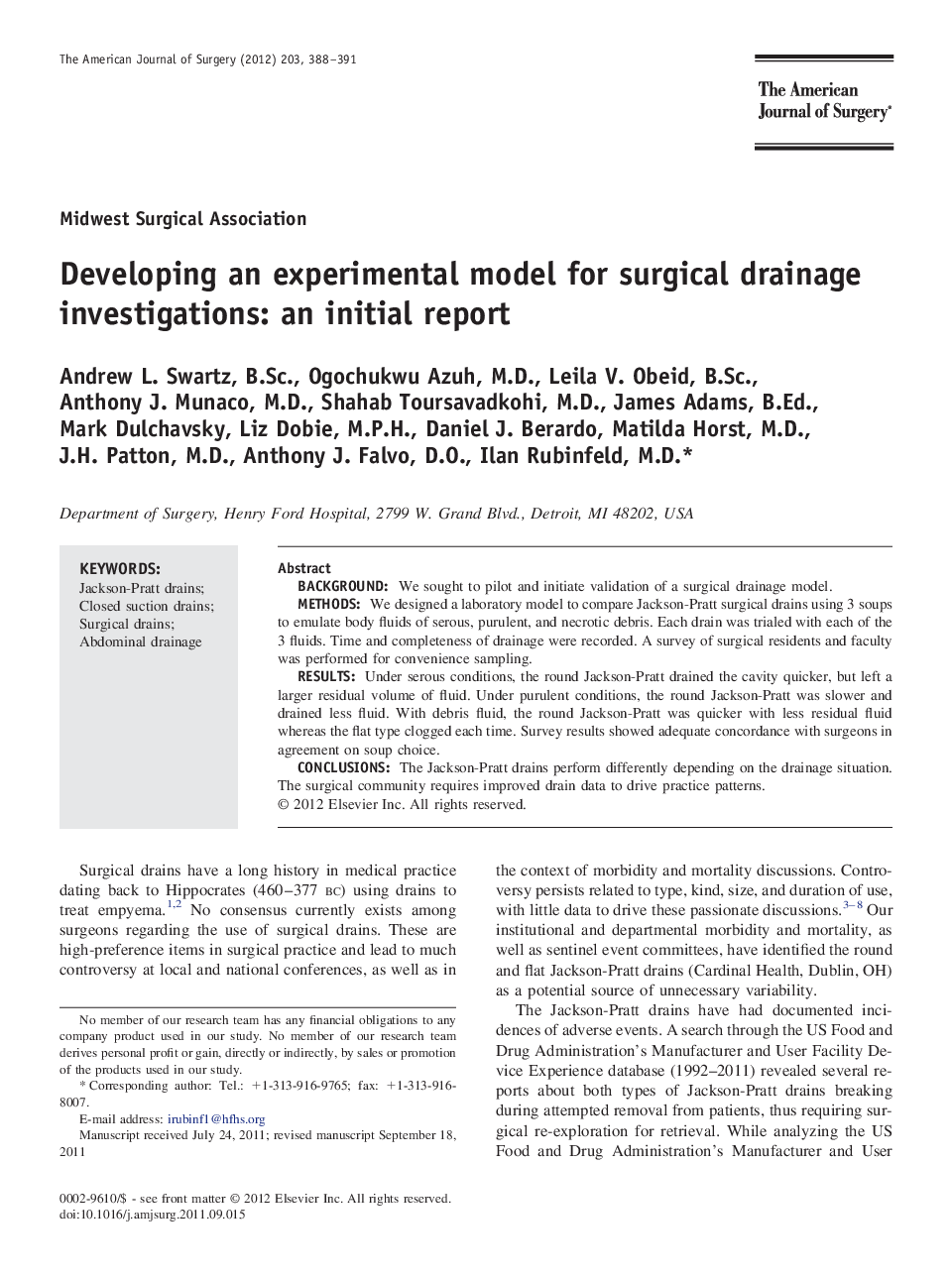| کد مقاله | کد نشریه | سال انتشار | مقاله انگلیسی | نسخه تمام متن |
|---|---|---|---|---|
| 4279240 | 1611533 | 2012 | 4 صفحه PDF | دانلود رایگان |

BackgroundWe sought to pilot and initiate validation of a surgical drainage model.MethodsWe designed a laboratory model to compare Jackson-Pratt surgical drains using 3 soups to emulate body fluids of serous, purulent, and necrotic debris. Each drain was trialed with each of the 3 fluids. Time and completeness of drainage were recorded. A survey of surgical residents and faculty was performed for convenience sampling.ResultsUnder serous conditions, the round Jackson-Pratt drained the cavity quicker, but left a larger residual volume of fluid. Under purulent conditions, the round Jackson-Pratt was slower and drained less fluid. With debris fluid, the round Jackson-Pratt was quicker with less residual fluid whereas the flat type clogged each time. Survey results showed adequate concordance with surgeons in agreement on soup choice.ConclusionsThe Jackson-Pratt drains perform differently depending on the drainage situation. The surgical community requires improved drain data to drive practice patterns.
Journal: The American Journal of Surgery - Volume 203, Issue 3, March 2012, Pages 388–391